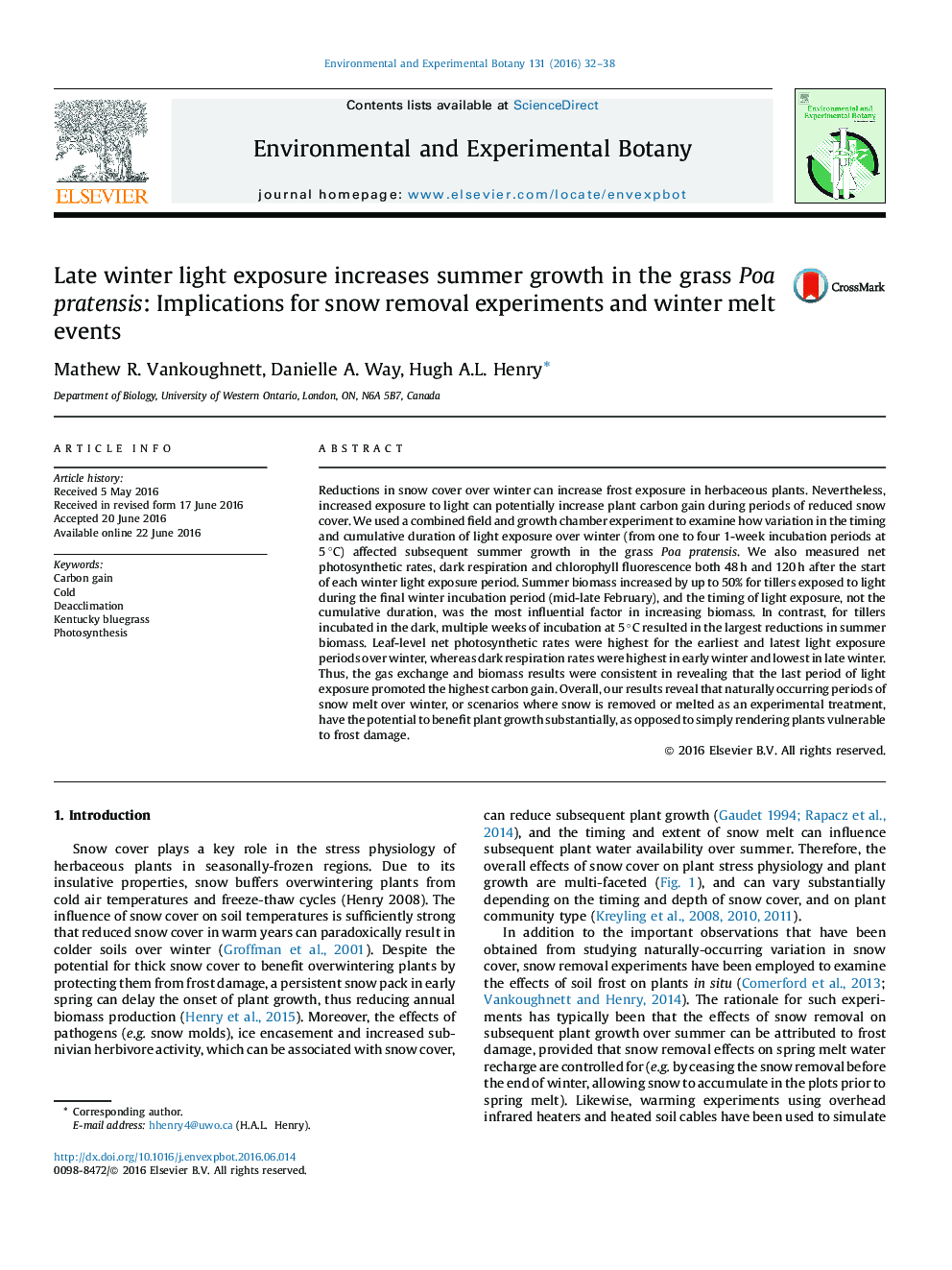| کد مقاله | کد نشریه | سال انتشار | مقاله انگلیسی | نسخه تمام متن |
|---|---|---|---|---|
| 4553996 | 1628046 | 2016 | 7 صفحه PDF | دانلود رایگان |

• Reduced snow cover can increase grass frost exposure but also increase light exposure.
• Summer biomass increased up to 50% for grass tillers exposed to light during winter.
• Tming of winter light exposure, not cumulative duration, affected biomass most.
• The ratio of photosynthesis to respiration at 5 °C was highest in late winter.
Reductions in snow cover over winter can increase frost exposure in herbaceous plants. Nevertheless, increased exposure to light can potentially increase plant carbon gain during periods of reduced snow cover. We used a combined field and growth chamber experiment to examine how variation in the timing and cumulative duration of light exposure over winter (from one to four 1-week incubation periods at 5 °C) affected subsequent summer growth in the grass Poa pratensis. We also measured net photosynthetic rates, dark respiration and chlorophyll fluorescence both 48 h and 120 h after the start of each winter light exposure period. Summer biomass increased by up to 50% for tillers exposed to light during the final winter incubation period (mid-late February), and the timing of light exposure, not the cumulative duration, was the most influential factor in increasing biomass. In contrast, for tillers incubated in the dark, multiple weeks of incubation at 5 °C resulted in the largest reductions in summer biomass. Leaf-level net photosynthetic rates were highest for the earliest and latest light exposure periods over winter, whereas dark respiration rates were highest in early winter and lowest in late winter. Thus, the gas exchange and biomass results were consistent in revealing that the last period of light exposure promoted the highest carbon gain. Overall, our results reveal that naturally occurring periods of snow melt over winter, or scenarios where snow is removed or melted as an experimental treatment, have the potential to benefit plant growth substantially, as opposed to simply rendering plants vulnerable to frost damage.
Journal: Environmental and Experimental Botany - Volume 131, November 2016, Pages 32–38